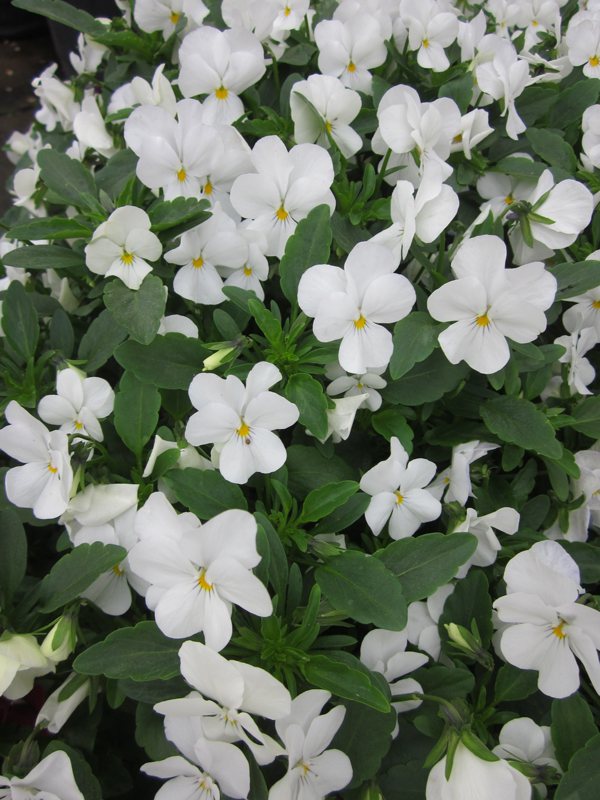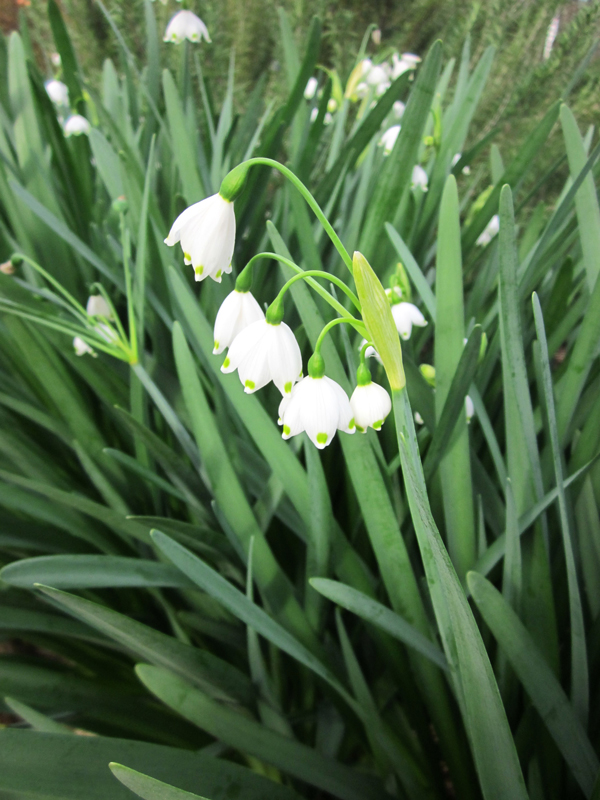Winterscaping with white flowers – by Diane Morey Sitton
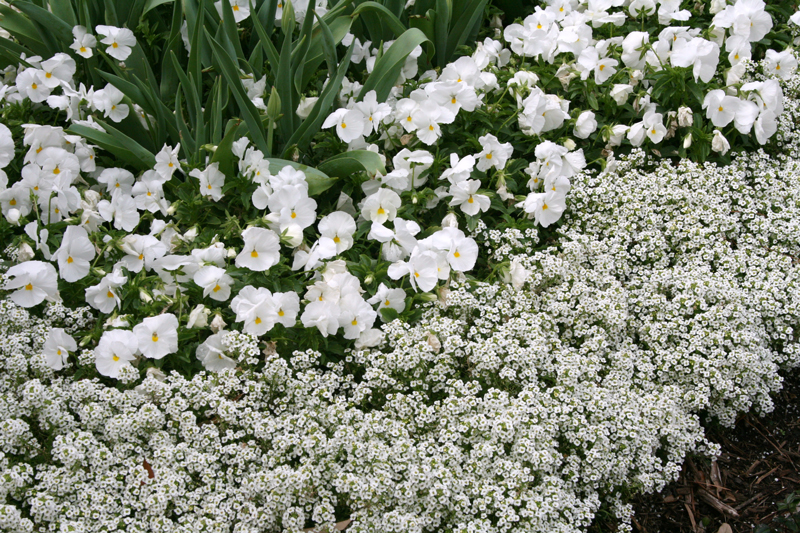
There’s something about white winter flowers that invigorates gardens. As pure as snow, they catch the eye and brighten the landscape. Best of all, selections are available for beds, borders, and containers.
Start the winterscape with white-flowering pansies. Line them up along walkways or use the 6-inch-tall plants to beautify beds awaiting the emergence of spring bulbs. When grown in organically-rich, well-drained soil, pansies thrive in pots, planters, and window boxes. Scale down the display with the miniature pansy-like flowers of violas. The latter are especially suited to spill their clouds of small blooms from containers and planter boxes. For a memorable display, plant young transplants in strawberry jars. It won’t take long before each planting pocket becomes a billowing bouquet.
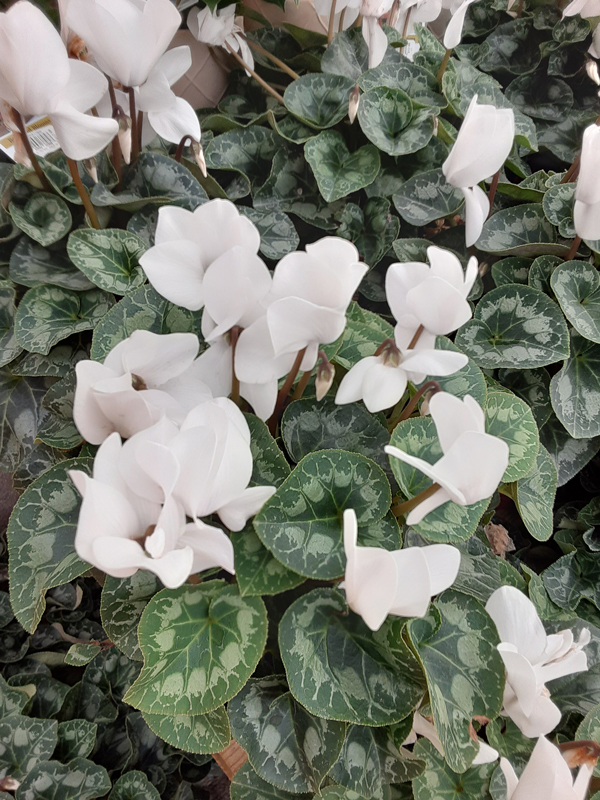
Cyclamen, too, thrives in containers where it flaunts butterfly-like blooms. Typically, its heart-shaped foliage is marked with silver variegation. Grow the foot-tall plants in well-drained soil. You can grow them outdoors in warmer areas of South Texas or in patio pots that you can take into protection in colder areas farther north. Do not over-water them. Setting pots in pans of water is a bad idea, as one example.
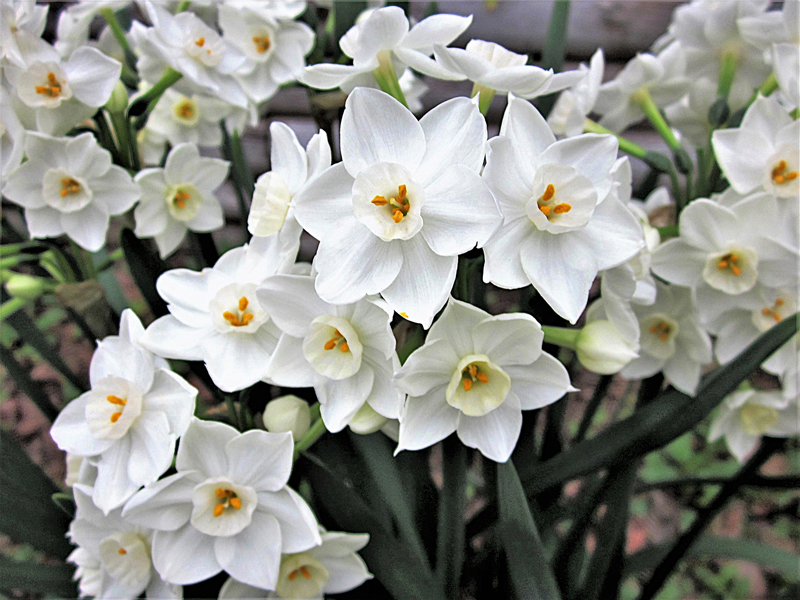
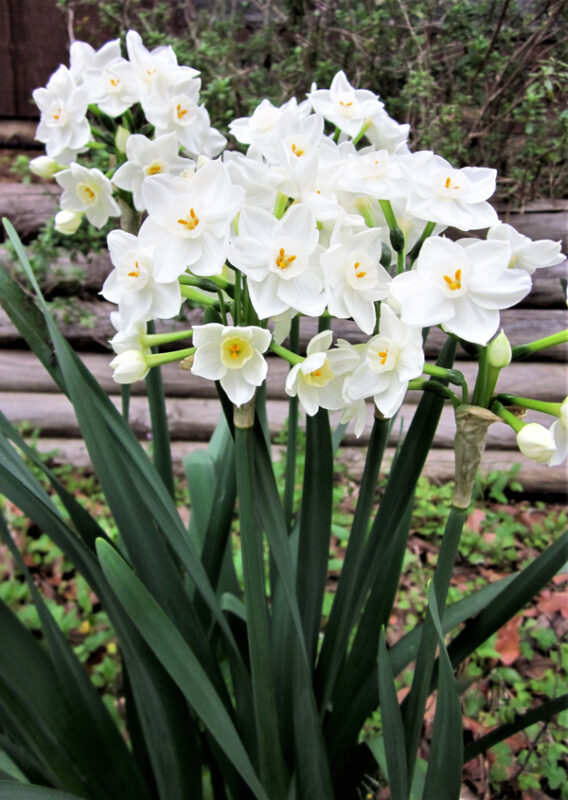
Bulbs share the winter spotlight, as well. The only thing more intoxicating than paperwhites’ unmistakable fragrance is the purity of color of its snow-white blooms. For folks who garden in Texas’ mildest regions, including the Gulf Coast, this old-fashioned, frosty-white member of the Narcissus family blooms in early winter. It vigorously multiplies, eventually forming large clumps. (Tip: The blue-green leaves supply energy for the following year’s blooms. Don’t cut the foliage until it dries and turns yellow.)
Compared to attention-grabbing paperwhites, dainty snowflakes (Leucojum) are garden wallflowers: that is, they are somewhat shy, but no less lovable. Plant these petite beauties along sidewalks, beside paths, or anywhere you can appreciate their delicate beauty close-up. Although commonly called snowflakes, “snowbell” better describes the dainty white flowers that dangle like bells from the arching stems. Plants reach 18 inches tall. Grow them in mass for the showiest effect.
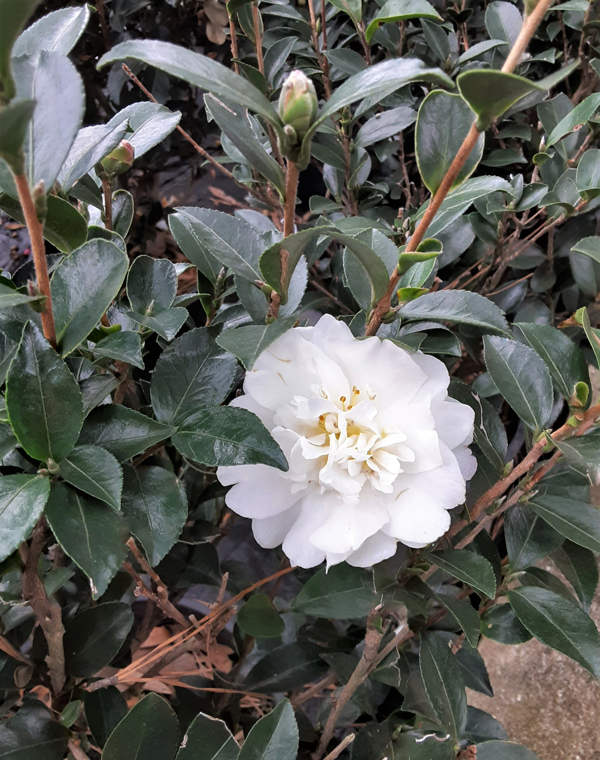
Shrubs, too, contribute to winter’s wonderland. ‘Polar Ice’, ‘Snow Flurry’… the names themselves of these white-blooming camellias suggest the frosty chill of winter. Long a woodland favorite, Camellia japonica typically showcases double blooms against glossy, dark green foliage. Given well-drained, organically-rich soil, most varieties grow to form 6-12 foot tall shrubs. Japonicas bloom from midwinter until spring. As with azaleas, camellias must have strongly acidic soils, and they are tender to winter cold in far North Texas. Let your nursery professional guide you.
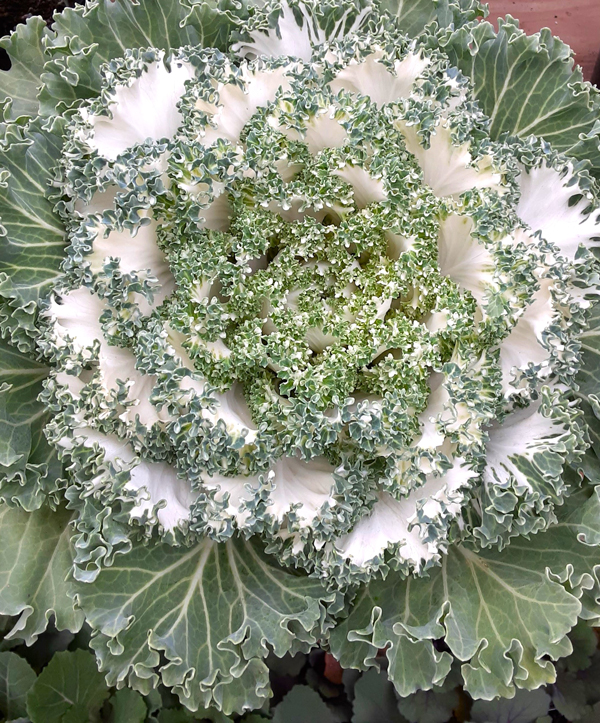
But flowers aren’t the only winter whites. Foliage, too, brightens dreary landscapes with snowy hues. Despite a palette of floral-like leaves in colors ranging from pink to red, it’s the green and white varieties of flowering cabbage and flowering kale that most closely resemble frilly bowls of snow. Interchange these cold-loving annuals with each other in beds and containers. For the frilliest display select flowering kale. Its foliage tends to be more finely cut than the waxy, ruffled leaves of flowering cabbage. Plants bolt in mid-spring.
Eventually, as spring arrives, shades of green and cheerful pastels will overtake the landscape. But for now, it’s winter with all its radiant white.

